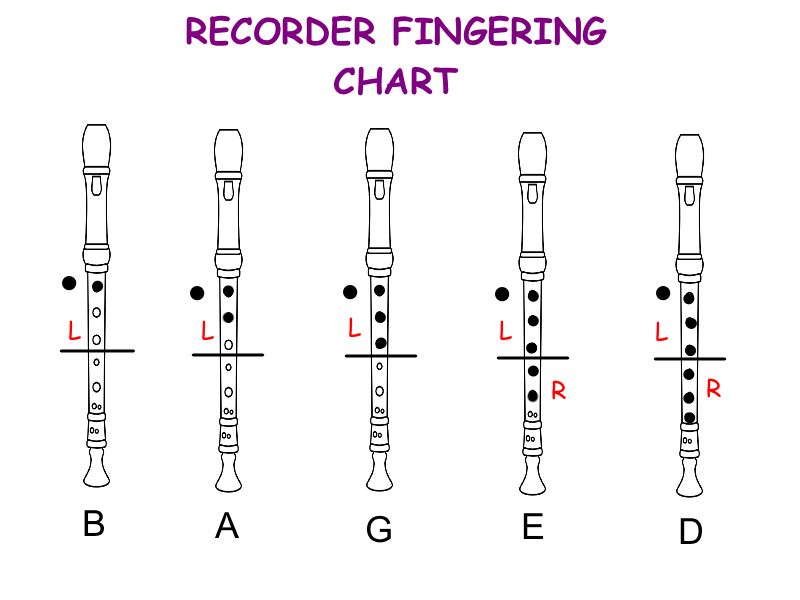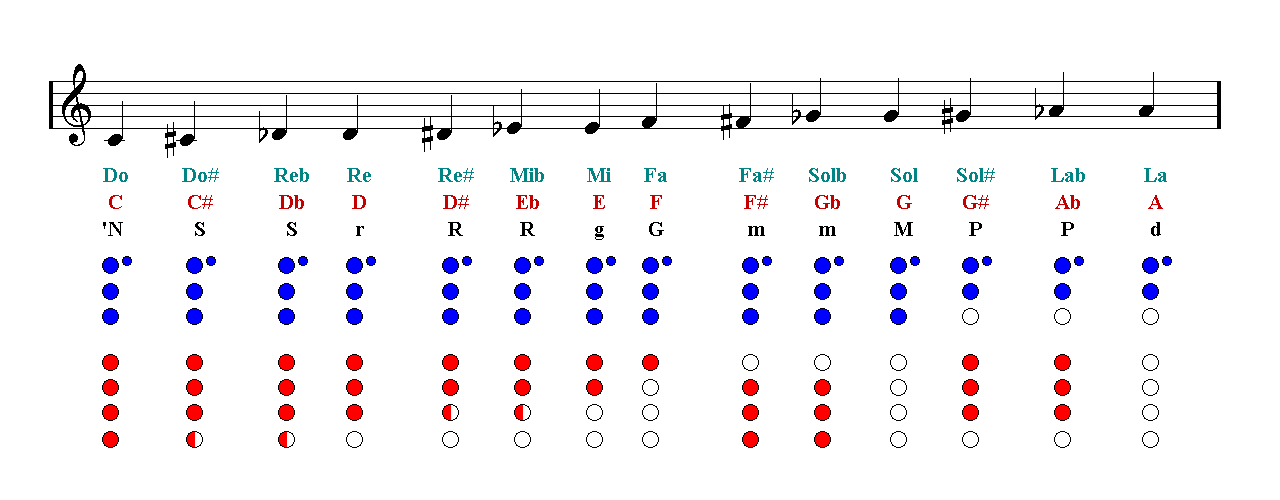
There will be times when you may need to read notes below the typical range of the treble clef (leger lines) and sometimes the fundamental (lowest note) of the alto may be written on the bass clef.

Students learning the soprano recorder may like to try naming the notes in the alto version, as an exercise. It is presented in soprano and alto versions. It isn't hard now that you have learned all the notes needed to play it. In English-speaking countries, there usually comes a time when someone who is learning an instrument is asked if they can play "Over the hills and far away", somebody's idea of a joke! Well, here is the song.

This includes the fingerings for all sizes of recorders and variations. While it may not seem important at this stage, when you begin to learn more complex music, and to play faster, you will find it much easier to move a short distance. Here are basic fingering charts for soprano (or tenor) and alto recorder. Banjo Chords MEL BAY This handy book shows all of the basic banjo chords. A rough guide would be that your finger should not rise more than one finger's width above the hole. and modal tunes Historical notes and picturesque backstories Ken. Your fingers should remain close to the holes but not so close that the note starts to change. Questions And Answers: Philips VoiceTracer Digital Voice Recorder. Perfect for beginners Most finger/note charts list every note possible, on a range of instrument sizes with some. Good technique means not straining muscles and joints, and finishing one note in a position that is comfortably ready to play the next note.Īs you practice the songs in this first exercise, take time to consider the position of your fingers as you open the holes for each note to speak. This is a well-known beginner song for the recorder because it only has three notes and a repetitive tune. The Digital Voice Tracer lets you dictate documents and notes on the move. Our online piano can be played like a physical piano because we match the. Technique is the term used by musicians to describe the physical activities that make up playing music. play single notes or chords with keyboard, mouse or touchscreen (seven octaves). Continue to practice the song without mistakes before increasing the tempo, and increase the tempo until it "feels" right. C-A-D-C-A (high ones) Either is easy and often early in a recorder method book or curriculum. On the recorder, this translates to either practicing: G-E-A-G-E. Once you can play the song at a slow tempo without mistakes, increase the tempo a little. It’s Raining, It’s Pouring is a good song for practicing the sol-mi-la-sol pattern in singing and on the recorder. When you make a mistake, play the song again, more slowly so that you play without mistakes. Aim not only for the correct fingering, but for correct duration of each note, and to make a pleasant sound. Pay attention to the sound you are making. If you are uncertain whether you are playing these songs correctly, you can listen to MIDI renderings of these songs by clicking on BAG and FED Using the fingerings above, practice the two simple first songs presented in BAG and FED two first songs. Transpose FED up by a fifth, then check your work by referring to Recorder Exercise 1b. Students using an "F" instrument should play BAG as is, but should make a transposed copy of FED, as an exercise. Students using a "C" instrument should be able to play BAG and FED two first songs without difficulty. He has written extensively about Recorder Technique and teaching principles.In this lesson you will learn some of the finger patterns for both right, and left hands.

It is in treble clef which is the normal clef for a descant A solid.

He is also the founder of the UK Branch of the European Recorder Teachers Association and current Chairman. Below is a simple chart to show you the fingerings for a standard descant recorder.
#SIMPLE RECORDER FINGERING CHART PROFESSIONAL#
Peter Bowman, Author of the Recorder Technique Doctors, and the Professional Recorder Fingering Chart, Peter is lecturer in instrumental studies at Christchurch College, Canterbury. Unfolded it stands upright on your music stand without toppling off. Dr Downing's Professional Recorder Fingering Chart folds neatly in half to easily slip in your pocket.
#SIMPLE RECORDER FINGERING CHART PRO#
If it's good enough for the pro it MUST be good enough for us. As an aid to teaching and learning to read at sight, "note names" are deliberately omitted. All notes are shown in both flat and sharp form. This handy chart, used together with Dr Downing's Recorder Technique Doctor, by Peter Bowman, will get you playing better than ever. As you know, the dynamic range of the recorder is limited. Trying to play both loud and soft on one fingering can cause you to play out of tune. Plastic laminated for strength and durability the chart shows the fingerings for descant/tenor on one side and sopranino/treble/bass recorders on the other. Standard fingering charts only show basic fingerings.


 0 kommentar(er)
0 kommentar(er)
